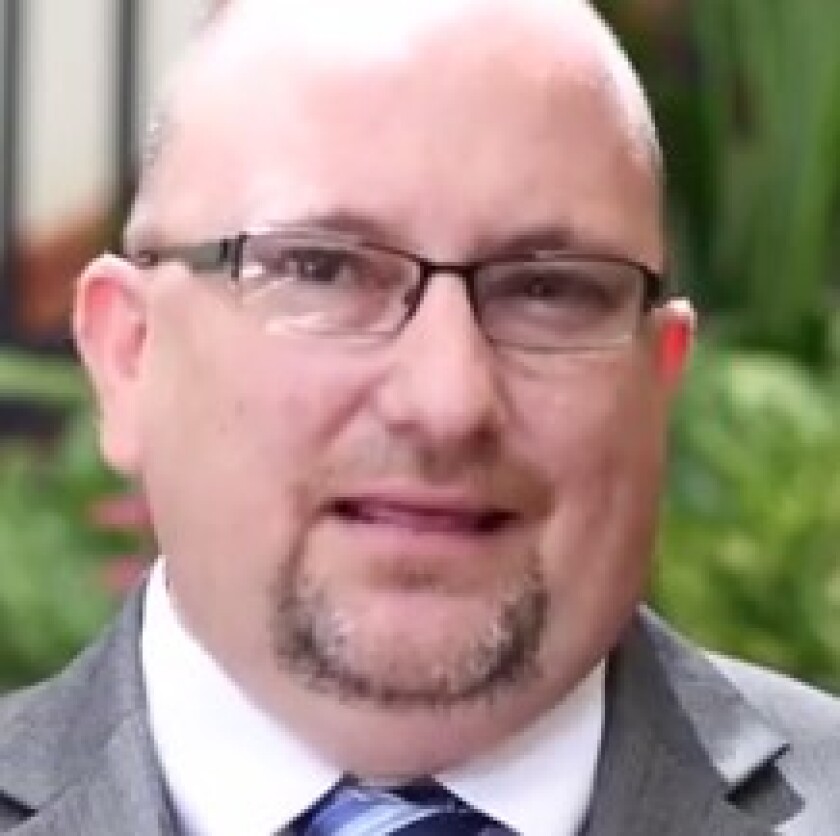
Techwire: What was the motivation for the creation of the new GIS “portal of portals?”
Gregory: In the spirit of innovating and developing and releasing products quickly, CDT was tasked — especially the Office of Enterprise Technology — to pull together a project … where the Office of Enterprise Technology would develop a singular portal that would pull in data from the variety of GIS users from throughout the GIS community in the state to be able to get a fuller articulation of what the state’s data assets are in regards to geographic data.
That effort was actually kicked off (Nov. 1) at a GIS symposium that was held at the California Environmental Protection Agency that was hosted by the state with a very critical private industry partner, Esri, in attendance.
The idea there was to create this broader portal of portals platform that will be specific to GIS data, to GIS products, like maps and story maps and applications. The state’s open-data movement and the new portal will complement each other, so we’re looking at ways to be able to connect the two, and building out this portal of portals is a really excellent step to get us toward that.
Techwire: Is this an entirely new initiative by the state?
Gregory: It has occurred in pockets previously. This is going to be a more holistic view, to incorporate all entities within the state that are active developers or consumers of geographic data. That would include organizations like CalEPA, the California Department of Transportation and other major organizations at the agency level throughout the state
We’re confident that a lot of those data elements exist. They’re there, they’re actively curated and managed; now it’s a matter of stitching together all those wonderful data resources.
The challenge will be leveraging the existing technology the state already uses to make this happen. So we, the Department of Technology, will leverage a Software-as-a-Service technology provided by Esri to not only stitch the information together, but to bring the information to the user in a way that’s meaningful.
Techwire: What made this happen now?
Gregory: The motivation has always been there. I can tell you from experience — being in a leadership role for GIS in the state since 2011, but also prior to that, being in industry, working with the state of California on GIS — there’s always been a very strong movement and notion toward, ‘This is an important science, and the product is important — the data.’
Techwire: Will there be much county/city input to the state project?
Gregory: It’s primarily a state initiative at the moment, but … that momentum and that desire to share and collaborate is found at the county and city level, as well.
Techwire: Will the counties and cities be welcome to use and contribute to the state’s data resources?
Gregory: Absolutely. The idea is to spread the broader benefit beyond government. It’s publicly funded data; we should be cognizant of that fact and make sure that’s available to the folks who funded it.
This is a … cultural shift in how we will engage data going forward. That’s the vision that I have and that leadership has, and we’re going to change, in a way, the conversation around how the departments engage with data, the way the citizenry engages with data, the way business engages with data.
Techwire: Can you give some practical examples of GIS data being used in state decision-making?
Gregory: The recent wind events (which prompted widespread public safety power shutoffs by PG&E). Some of the work the state has done is in relation to using data to drive information related to public safety, related to services, and much of it is location-based: ‘Where’s the power going to be turned off? Am I near it? How far am I from it? Is there a fire — how close am I to it? Can I get away? What roads are closed?’ Those kinds of things are geographic questions. And a lot of those answers that were provided during those events were informed by GIS. That’s a really powerful example.
The momentum is there now, We have a lot of support agencywide and across other agencies to make sure that this information doesn’t end up in a binder on a bookshelf. We have an active program watching this, assuring that it’s fresh, assuring that it’s moving forward. I have a staff dedicated to this that complements the broader GIS community — that’s hundreds of people. We’re very excited to see where this goes.
Techwire: Did representatives of Little Hoover confer with state GIS officials before issuing their report? (The state Little Hoover Commission issued a report last month in which it urged more state emphasis on the use of GIS technology.)
Gregory: “We did have some conversations related to some of the topics that they wanted more detail on, definitely. We absolutely believe in the notion that a dedicated focus on GIS is incredibly important. I think that’s been evident in the work we have done in the last decade.
State officials noted that the Nov. 1 meeting at Cal EPA meeting had been planned before Little Hoover issued its report. Gregory said the commission’s interest reflects a broader awareness of the importance of GIS in state governance.
Gregory: With GIS coming out of the shadows and into the light, people are going, ‘Whoa, this is pretty transformative. Why aren’t we thinking more about this?’
I think we’re going to see a lion roar here in the next year or so.







